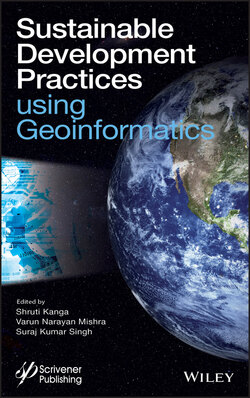Читать книгу Sustainable Development Practices Using Geoinformatics - Группа авторов - Страница 43
2.4.4 CMRI Assessment
ОглавлениеRisk assessment is defined as a probability of harmful consequences or expected losses based on interactions between hazards and vulnerable conditions [20, 21, 28]. Therefore, risk assessment in an area considers a combination of hazards and vulnerabilities. Similar to other risk assessments, coal mining-related risk also depends on a combination of various hazard parameters and their interaction with a population. Hence, it is essential to investigate the severity, and spatial extent of these hazards as well as the socio-economic ability of the region to anticipate and cope with the dangers.
Table 2.3 Area statistics of geo-environmental hazard index in study area.
| Geo-environmental Hazard Zones | Area (km2) | % Area |
|---|---|---|
| Low | 90.88 | 23.86 |
| Moderate | 164.85 | 43.28 |
| High | 72.11 | 18.93 |
| Very High | 53.16 | 13.93 |
| Total | 381.00 | 100.00 |
In the present study, the geo-environmental hazard map derived by integration of different hazard parameters along with the socio-economic vulnerability map is used to deduce the coal mining risk pattern at village level (Equation 2.3). The index value of the output model varies from 15 to 100 in the study area. These index values were further classified using natural breaks (Jenks) classification method in ArcGIS as 15–32 (low), 32–45 (moderate), 45–63 (high), and 63–100 (very high) categories that represent various risk zones (Table 2.4 and Figure 2.8). The results of the study revealed that 133.16 km2 (34.97%) of the study area exhibit low risk zone and is located in the northern, western, and south-west regions. The villages represented in this category are Dari, Kodwe, Palani Talapur, Koto, etc. The moderate risk zone is scattered all over the study area comprising 125.68 km2 (33.01%). The major villages in this categories are Tongi, Chumba, Dari, Kanki, etc. (Table 2.4). Major urban settlements and villages situated near mining and industries, such as Sirka, Saunda, Hehal, Chaingara, Lapanga, and Patratu are in the high (78.96 km2; 20.68%) to very high (43.20 km2; 11.35%) risk zones.
The coal mining risk map indicates that high to very high risk zones are present in the central, eastern, and south-eastern parts of the study area. These areas are at higher risk due to high pollution density, active coal mining, presence of coal-based industries that contribute higher AOT and PWV and lowest vegetation cover (Figure 2.8). Coal mine fire locations are also present in many abandoned and active coal mines such as Saunda, Lapanga, Urimari, and Bhurkunda. The fires can causes serious health and safety hazards, land subsidence that affects the environment and infrastructure (roads, electric poles, bridges, buildings, etc.) of the study area. Therefore, these areas are highly prone to hazard and vulnerability zones and need special attention. The areas that are at the lowest risk are attributed to large forest cover and lowest anthropogenic activity.
Table 2.4 Area statistics of coal mining risk index in study area.
| Risk Zones | Area (km2) | % Area |
|---|---|---|
| Low | 133.16 | 34.97 |
| Moderate | 125.68 | 33.01 |
| High | 78.96 | 20.68 |
| Very High | 43.20 | 11.35 |
| Total | 381.00 | 100.00 |
Figure 2.8 Showing coal mining risk zone index map of the study area.
